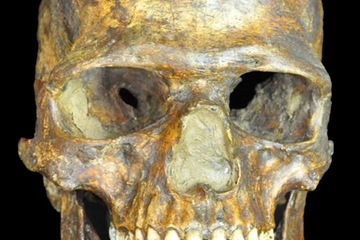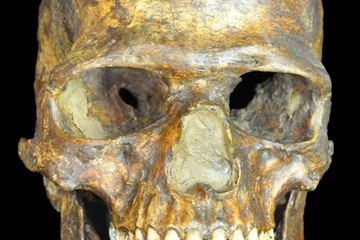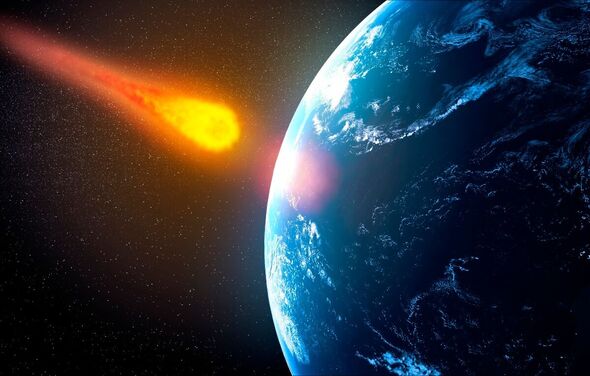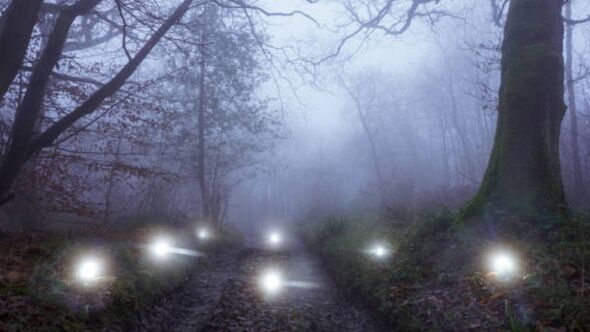
Sink or swim time as Tony Popovic fights against the tide
December 6, 2014
Europe Stocks Climb to Seven-Year High on QE Bets, Economic Data
December 6, 2014

The skull of a man who lived between 36,200 and 38,700 years ago in Kostenki in western Russia.
Credit: Peter the Great Museum
There is a surprising genetic unity between the earliest known Europeans and contemporary Europeans, ancient DNA reveals. This finding suggests that a complex network of sexual exchange may have existed across Europe over the past 50,000 years, and also helps to pinpoint when modern humans interbred with Neanderthals, the closest extinct relatives of modern humans, the researchers said.
The origin of contemporary Europeans continues to be debated. The modern human ancestors of contemporary Eurasians are believed to have left Africa about 50,000 to 60,000 years ago, but how these earliest Eurasians contributed to the modern European gene pool remains unclear.
To shed light on the origins of modern Europeans, scientists analyzed DNA from the left shinbone of a skeleton, known as K14, which was excavated in 1954. K14 is one of the oldest fossils of a European modern human — a man who lived between 36,200 and 38,700 years ago in the area that’s now Kostenki, in western Russia. That region is known for its mammoth structures, “circles made of mammoth bones that would have been the base of tents, huts, hearths, lithic and bone artifacts, as well as personal ornaments and figurines,” said study co-author Marta Mirazón Lahr, a paleoanthropologist at the University of Cambridge in England. [The 10 Biggest Mysteries of the First Humans]
The researchers sequenced K14’s complete genome, making it the second-oldest modern human genome ever sequenced. The oldest yet was from the 45,000-year-old thighbone of a man found in western Siberia.
Surprisingly, the researchers found that contemporary Europeans shared genetic continuity with ancient Europeans.
“Virtually all the major genetic components you find in contemporary Europeans are present among the earliest Europeans,” said lead study author Eske Willerslev, an evolutionary biologist at the University of Copenhagen in Denmark. “I don’t think many would have predicted this.”
The scientists discovered that for millennia, Europe may have been home to a so-called “metapopulation” of modern humans — a group of distinct, separate populations that regularly mixed, grew and fragmented. The genetic contributions of the earliest Eurasians to modern European populations may not have arrived through a few distinct migrations from Asia to Europe, but instead through gene flow in various directions.
“We have to revise our understanding of how the genetic diversity in contemporary Europeans came about,” Willerslev told Live Science. “Early Europeans were part of a metapopulation stretching all the way to Central Asia, and through a complex network of sexual exchange, contemporary European populations were created.”
All in all, Europeans maintained genetic continuity from their earliest establishment out of Africa until Middle Eastern farmers arrived in the last 8,000 years, bringing with them agriculture and a lighter skin color, the researchers said.
“While people have moved in and out of Asia and Europe, including in the recent past, the genome of Kostenki reveals, for the first time, the extraordinary continuity of Europeans,” Mirazón Lahr said. [Photos: Our Closest Human Ancestor]
Indeed, the major components of the modern European genome may date farther back than scientists had thought, all the way to the Upper Paleolithic Era, between 50,000 and 10,000 years ago, the researchers said. The fact that there was genetic continuity during this span of time is remarkable because “this period corresponds to the most extreme climate modern human populations ever lived through, particularly pronounced in Europe,” Mirazón Lahr told Live Science. “For 30,000 years, ice sheets came and went, at one point covering two-thirds of Europe,” she said.
The new study also found that K14’s DNA is similar to that of a 24,000-year-old boy that was found in central Siberia, as well as to that of contemporary western Siberians and many Europeans, but not to the DNA of eastern Asians. This finding reveals that western Eurasian and East Asian lineages had already split from each other by about 37,000 years ago.
There had been much debate among scientists about when western Eurasian and East Asian lineages diverged, “ranging from very recent split times to very old,” Willerslev said. “We exclude the possibility of a very recent split.”
K14 also harbored about 1 percent more Neanderthal DNA than modern humans. K14 was expected to possess more Neanderthal DNA than is present in people today, since any Neanderthal ancestry that modern humans might have should have diluted over time, once Neanderthals went extinct.
Genetic data from K14 suggest that modern humans and Neanderthals interbred about 54,000 years ago, before the modern human population in Eurasia began to separate. This is why 1.5 to 2.1 percent of the DNA of anyone today with Eurasian ancestry — from Europe to Asia to the Americas — is Neanderthal in origin.
However, even though modern humans went on to share Europe with Neanderthals for another 10,000 years, very little, if any, additional interbreeding occurred.
“Were Neanderthal populations dwindling very fast? Did modern humans still encounter them? We were originally surprised to discover there had been interbreeding,” study co-author Robert Foley, also of the University of Cambridge, said in a statement. “Now the question is, why so little? It’s an extraordinary finding that we don’t understand yet.”
The scientists detailed their findings online today (Nov. 6) in the journal Science.
Follow us @livescience, Facebook Google+. Original article on Live Science.




